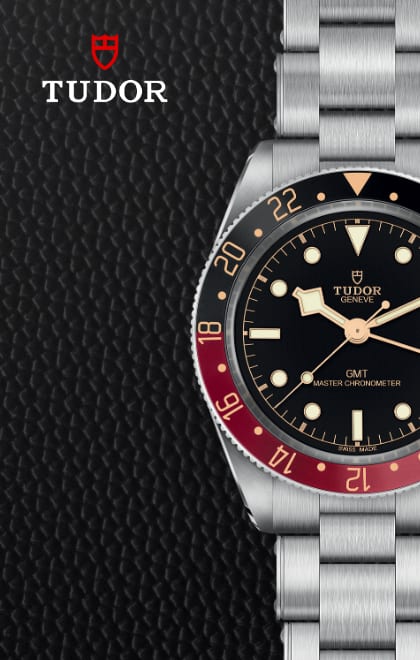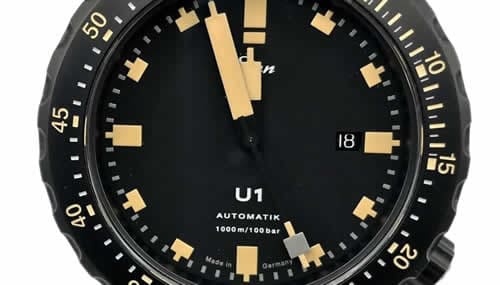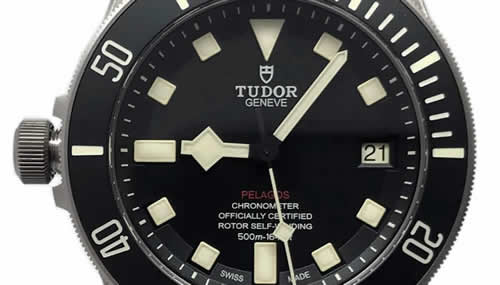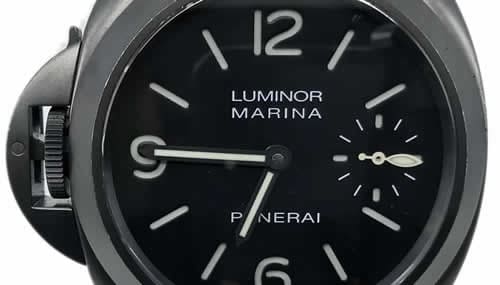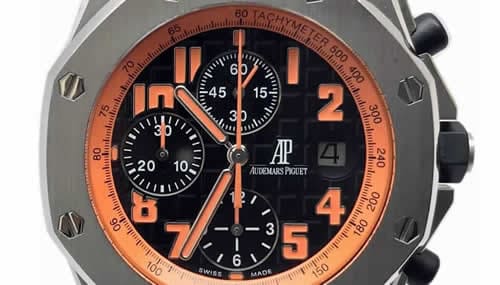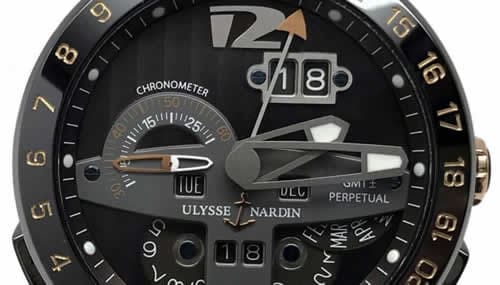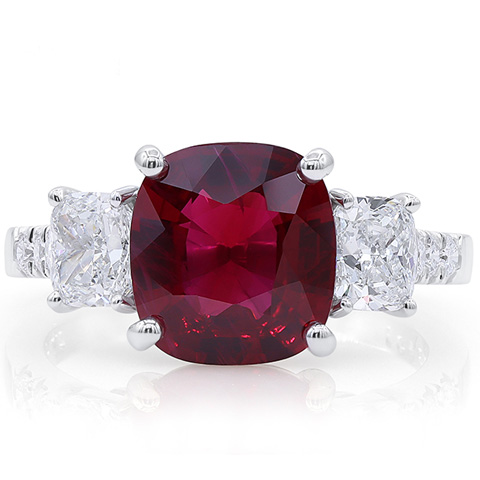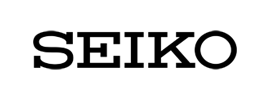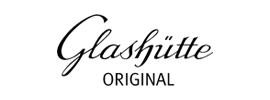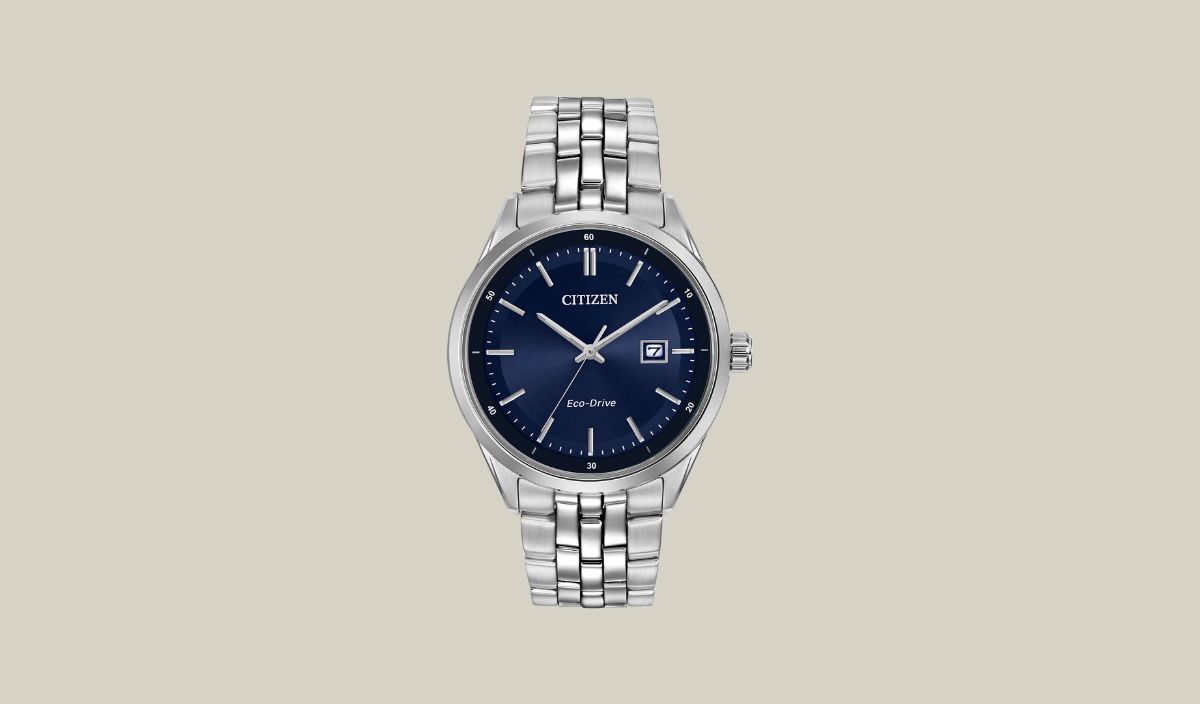
Is Citizen a Good Watch Brand? (The Honest Truth)
There is no argument here. Swiss giants, namely those belonging to LVMH and Swatch Group, are selling the majority of the world’s best watches, and let’s not forget that Rolex is pulling its weight, too, accounting for 30% of the industry’s sales.
But the Swiss are not the only players in this horological game of craftsmanship, innovation, and storytelling.
Japanese brands like Seiko and Citizen are known for their technological advancements and, as well as nurturing a sizeable domestic market, contribute to the industry in a big way, though more for their mass-market designs that sit within the mid-price range.
For the most part, Citizen is the world’s largest watchmaker by volume. But that fact alone doesn’t necessarily help if you’re wondering whether its watches are any good.
In this article, we’ll aim to cover the question, “Are Citizen watches any good?” because what people really want to know is whether they’re worth buying and, if so, why they’re so underrated.
Perceptions of Budget Watch Brands
It’s only fair that Citizen gets the same level of coverage as we’d provide if we were covering a big brand like Rolex. What we really need to look at are all the factors that play a role in Citizen’s contribution to the world of watches.
We need to provide you with a comprehensive introduction to the brand, take a look at its history, and then delve into some of its innovations. But before we go any further, there’s one thing we need to touch on: the perception people have of budget watch brands.
I mentioned earlier that Citizen is an underrated watch brand for what it offers. Some of that will become clearer as you continue reading, but affordable watch brands are often viewed as disposable and not reputable enough.
But not everyone wants to spend a few thousand dollars on a new watch. In fact, a few hundred dollars can be an expensive investment for many of us. Not everyone is working on the same budget. Even so, a common misconception is that a budget brand must mean poor quality materials.
I’ve said this before, and I’ll say it again – budget watch brands are misunderstood. And one reason why Citizen may be overlooked is down to its mass production of affordable watches. Plus, Japanese origins generally carry the stigma of being cheaply made and of lesser quality.
If that was your understanding of Citizen watches before you began reading this article, you should prepare yourself to be pleasantly surprised.
I’m not going to overegg this watch brand, or big it up to a be something it isn’t. But if you get to the end of this guide without learning at least one or two things about this manufacturer, I’ll be dammed!
The Early Days
Given Citizen’s avant-garde designs and some of its horological innovations, you could be forgiven for thinking this brand is younger than it actually is.
How about 1918 for its founding year? Surprised much? Indeed, the company evolved as a product of the Shokosha Watch Research Institute by Kamakechi Yamazaki. However, the actual Citizen name didn’t start to appear on watch dials for another five years.
No one really knows exactly how the brand acquired its name, but it’s thought that a close friend of Yamazaki – the mayor of Tokyo at the time – suggested the name since the ethos of the company was to make watches that were accessible to all “citizens” within Japan.
By partnering with a company called Schmid in 1930, Citizen could take full advantage of machining tools and its state-of-the-art factory, and by 1952 had released Japan’s first watch with calendar features.
The company grew and eventually began exporting watches outside of Japan, reaching a global audience and achieving a complete, fully automatic manufacturing process by 1970.
Citizen is a Pioneer in Dive Watches
So, Seiko definitely produced Japan’s first fully-fledged dive watch; I’m not disputing that. That happened back in 1965.
But does the name Parawater ring a bell to you? The Parawater was actually Citizen’s innovation, and it was Japan’s first water-resistant watch, birthed six years before the Seiko Diver’s 150 (AKA the 62MAS)!
It’s worth mentioning here that by this point, Citizen had already developed its Parashock technology, which, in turn, led to the brand’s shock counteraction function, ensuring the hands of a watch remained in continual movement when exposed to impact.
To add weight to Citizen’s Parashock technology, a watch was dropped out of a helicopter at a height of 30 meters and was found to be in perfect working order when retrieved.
It may not seem like such a big deal now, but the Citizen Parawater was 50-meter water resistant – a true feat for its time. This water resistance was upheld via special O-ring gaskets that sealed all the integral parts of the case, including the case back, the joints, the crown, and the glass.
Like the brand’s Parashock technology, the Parawater was subjected to tests, too. It was used to help conduct tidal research and was launched into the ocean for an extended period of time. Some three years, in fact, and was still found to be completely intact and operational at the end of the experiment.
The Parawater was the forerunner to the 1982 Promaster Marine. Citizen then released the 1300M Professional Diver’s watch, crafted from lightweight titanium in the same year, followed by the titanium-clad Aqualand in 1985 (the first quartz watch equipped with a depth gauge.
The model was superseded by the Fugu dive watch in 1989, which marked the birth of the Promaster series. It featured a chunky bezel with alternating smooth and serrated edges that resembled the pufferfish, hence its nickname.
Basically, my point is that Citizen was a valid contributor to the dive watch sector during the zeitgeist of the scuba diving and amateur diving era.
What About Citizen’s Materials?
Many don’t realize that Citizen was the first brand to release a watch made from titanium – the X8 Chronometer – a short-lived electronic watch. Sadly, the development went under the radar.
Meanwhile, titanium was a material that was already emerging in the aerospace industry thanks to its incredibly strong and corrosion-resistant qualities. It was even used in Apollo Mission vehicles, transporting astronauts to the moon.
Years later, Citizen returned to this material, developing the 1982 Professional Diver watch, not to mention the Atessa collection – an all-titanium series of watches. Suffice to say, for a brand that focusses on affordable, mass-scale manufacture, Citizen has been no stranger to innovative materials.
By the year 2000, the brand was producing titanium watch cases with a Duractect finish – a serum that made the material even more scratch-resistant, not to mention five times harder than stainless steel. This technology now goes by the name of Super Titanium.
These are not the only advantages of Super Titanium, however. Due to its unique composition, it can allow for a range of different colored cases that standard titanium is not able to offer.
Citizens Eco-Drive Technology
Here, we reach one of Citizen’s most important milestones of all. Its Eco-Drive technology. It’s one of the most famous technical contributions to the watchmaking industry. The story began in 1976 when the brand launched the Quartz Crystron Solar Cell (not as appealing as the name “Eco Quartz,” right?).
Let’s set the scene. During the 1950s, electrically powered watches were emerging, using a quartz oscillating weight. They were followed by LED and LCD watches, which eventually led to the digital watch.
Japanese watchmakers like Seiko, Citizen, and Casio were key to driving the manufacturing costs of these watches down through mass production. Simultaneously, America was developing solar panels, but Japan was already one step ahead, producing solar-powered units for watches.
The Quartz Crystron Solar Cell that Citizen developed could utilize the energy from any light source, including a bedside lamp.
However, its battery didn’t last all that long, so Citizen followed this up with improved models that could last up to 8 days, followed by one released in 1995 that could last 6 months on a single charge.
The Eco-Drive arrived a year later with a design that could allow light to pass through a translucent dial where a solar cell lay underneath. Power would be sent from the solar cell to a lithium battery, eradicating the need for a battery replacement.
The technology was groundbreaking and has become a tentpole innovation around which Citizen has centered so many of its designs. Citizen reached new levels of precision following this milestone, namely with its radio-controlled timing technology and its GPS satellite Wave watches, which arrived in 2011.
However, in 2019, Citizen’s technology set new standards in accuracy with the brand’s release of the Calibre 0100, capable of maintaining a precision of +/- 1 second per year thanks to the use of an AT-cut-type crystal oscillator that vibrates at a frequency of 8.4 MHz. Suffice to say, this infinitely powered watch is hard to beat, and the fact that you can buy an Eco-Drive watch for around the $200 mark today suggests that Citizen’s precise tools are an incredible investment proposition if you’re looking for longevity in a watch.
Sadly, the solar-powered technology of an Eco-Drive watch is massively understood. It’s one of the reasons why Citizen is so underrated as a brand. People see the word “quartz” and scoff at it.
But let’s not forget that on paper, a quartz watch will outperform a mechanical watch on precision by a country mile. Quartz watches are just so incredibly accurate, and the same goes for the Eco-Drive watch.
There’s also the misconception that a solar-powered watch will stop working if caught under a rain cloud or if it happens to be a particularly cloudy day.
The reality is that people don’t understand enough about Citizen’s solar-powered technology. Most people aren’t even aware that modern Citizen watches from the Eco-Drive series have a power reserve of a year, some even boasting an absurd 7 years in total darkness!
Brand Growth
Many perhaps don’t realize Citizen is a large parent company that bought Bulova in 2008. But that wasn’t where its relationship with the American brand first began.
In fact, it had been developing watch components for Bulova since the 1960s. Bulova is revered the world over for its technical innovations, but many of these breakthroughs are owed to the expertise and know-how of those at Citizen.
As the Japanese brand grew, so did its ambitions, and in 2012, it acquired La Joux-Perret, including its subsidiary, Arnold & Son. But that’s not where the story of Citizen’s growth ends.
In 2015, just six years after bringing La Joux-Perret under its wing, it began expanding its footprint in the Swiss watchmaking world by acquiring the Frederique Constant Group, comprising the likes of Alpina and Ateliers de Monaco.
Those well-versed in the Bulova brand will also be aware of the Accutron company, which became its own entity in 2020 before joining Citizen Watch Group. One pioneering development by Accutron was the electrostatic movement, which was only made possible by the help of Citizen’s experts.
As the years have passed, Citizen has continued to grow and now nurtures sponsorships with sporting events like the US Tennis Open. At the same time, its relationship with the cinematic world includes partnerships with Marvel, Star Wars, and Disney.
For a brand so closely associated with budget-friendly designs, Citizen has utilized its space on social media, effectively marketing itself to reach audiences engaged with the world of sport, TV, and technological innovation.
It’s not a luxury brand, don’t get me wrong, but its presence across the watch industry is certainly heard and seen.
Some of the Best Citizen Watches
Perhaps to fully decide whether Citizen watches are for you, a peruse through some of the brand’s most impressive watch collections will help. Here’s a brief introduction to the brand’s core lines to save you some time.
The Citizen Promaster Range
The Promaster watch collection by Citizen is certainly a series primed for those who like adventure and exploration. Basically, it’s not just your everyday sports watch.
For example, the Perpetual Chrono watch within this range boosts performance more than a typical chronograph, with its radio-controlled atomic clock synchronization, along with a tachymeter bezel to track speed based on distance.
The Promaster Diver
Perfect for those seeking excitement under the waves or those who love the rugged elegance of the dive watch, the Promaster Diver collection is home to models that combine luminous details with Eco-Drive technology, not to mention a solid 200M water resistance.
H3: Citizen Tsuyosa
Love the integrated sports watch? You won’t be disappointed with the Tsuyosa. It’s often compared to the Tissot PRX as the more affordable option. You can enjoy the Tsuyosa in several bursts of color, including ice blue, bubble-gum pink, a rich sunny yellow color, and a deep burgundy.
This is one of the few Citizen watches you can enjoy in a more compact size, thanks to its 40mm diameter and slim lug design.
A Comparison: The Citizen Promaster vs the Seiko Prospex
It’s one of the most common debates amongst collectors of budget sports watches – which brand is better – Seiko or Citizen? While the debate is bound to divide the crowds, we can at least add some weight to the topic by comparing one of Citizen’s most popular models with one of Seiko’s.
For example, let’s look at the Citizen Promaster and the Seiko Prospex. Both watches offer a similar style and price point, so it makes sense to put both contenders in the ring and see how they fair against one another.
Let’s start with the basics. Both of these watches appeal to dive watch collectors. Regardless of whether you actually intend to do any level of underwater exploration with one of these watches or whether you consider yourself a desk diver (no judgment here!), there are many ways you can adapt a dive watch to daily life.
They’re legible and durable and have a unidirectional rotating bezel. If for nothing else, you can always use this timing function when grilling your cheese on toast to perfection (yes, it is a science!). But let’s take the Seiko Prospex Turtle SRPE93 and the Citizen Promaster Diver ref BN0150-28E, for example.
Explore the
Biggest Pre-Owned Collection of Luxury Watches
Both have black dials with white luminous markers and hands, promise 200-meter water resistance, and are certified to ISO standards. Even better, both models are available in various dial colors (you name it, it’s probably been done).
They also feature mineral crystal fronts (not as great as sapphire, but still, they’re on par with one another). At the end of the day, both of these watches offer plenty of bang for your buck, with an unlimited range of straps to enjoy.
Movement-wise, however, these respective watches go in their own direction. While one is a mechanical movement, the other is a solar-powered quartz, so although they are similarly designed sports watches, the Prospex has a rather vaunted history and is powered by an automatic engine.
In contrast, the Promaster features a less romantic movement but one that runs for up to six months and is perfect for the “set-it-and-forget-it” type. While the Seiko Prospex is primed for function and durability, the Citizen Promaster is a complete classic.
Really, choosing between the two depends on personal preference. There’s not much in it, especially if you value quality materials, legibility, and robustness in a watch.
So, What’s the Verdict? Are Citizen Watches Any Good?
If you’ve skipped to the end of this article to get the low-down on whether Citizen watches are any good, then yes – in short – Citizen watches are good.
Especially if you’re drawn to technological innovation in a watch, and you like your timepieces to create interesting topics of conversation when chatting with other watch enthusiasts. Citizen watches, although not considered luxury items, certainly have a lot going for them.
The majority of watches made by this Japanese brand will cost you no more than $300 on average, and you can’t exactly say they lack good, quality materials, either. Citizen developed a hardening technique to enhance its titanium cases, a material already well-utilized by many high-end brands today.
It can also lay claim to one of the watch world’s most innovative technological innovations – the Eco-Drive watch. The industry’s solution to environmentally friendly timekeeping eliminates the need to replace batteries.
As much as the mechanical watch will always garner the most respect amongst watch enthusiasts, Eco-Drive watches are full of technological wonder, and quite frankly, they blow the accuracy of a mechanical watch out of the water.
Of course, being a low to mid-tier watch brand, Citizen watches are not exemplary. In fact, only a handful of watch brands deserve that term.
But we’re looking at a quality-to-price ratio and some pretty neat designs, from classic dress watches to sporty chronographs and everything in between. In fact, I’ve very rarely heard anyone say a Citizen watch is not worth the money they’ve paid for it.
These timepieces are very reasonably priced, and anyone who disagrees with that may be unaware of the sheer choice on offer. The only slight criticism I can find is that people feel the brand lacks options for the smaller-sized wrist.
Those that measure around the 40mm mark come up big. Generally speaking, Citizen watches do measure big, and the brand’s sub-41mm category is very limited in variation.
Only time will tell if the brand expands its smaller-sized offerings for those with less-endowed wrists, and it will be interesting to see if it pays attention to recent trends leaning towards smaller-sized options.
Despite this sticking point, they’re a good B-tier watch brand if you’re shopping with champagne tastes on a lemonade budget. You won’t get the same ruggedness and timeless style of an Omega or Rolex, but for a sub-$1k brand, you can’t go wrong with a Citizen watch.
About Exquisite Timepieces
Established in 1998, Exquisite Timepieces is your one-stop shop for all things luxury watches! We are an authorized dealer for 60+ luxury watch brands including Omega, Hublot, Seiko, & Longines! We are proud to showcase one of the world’s largest pre-owned watch collections, including renowned brands like Rolex and Patek Philippe. Check out our brand new watch arrivals here and popular pre-owned listings here.


